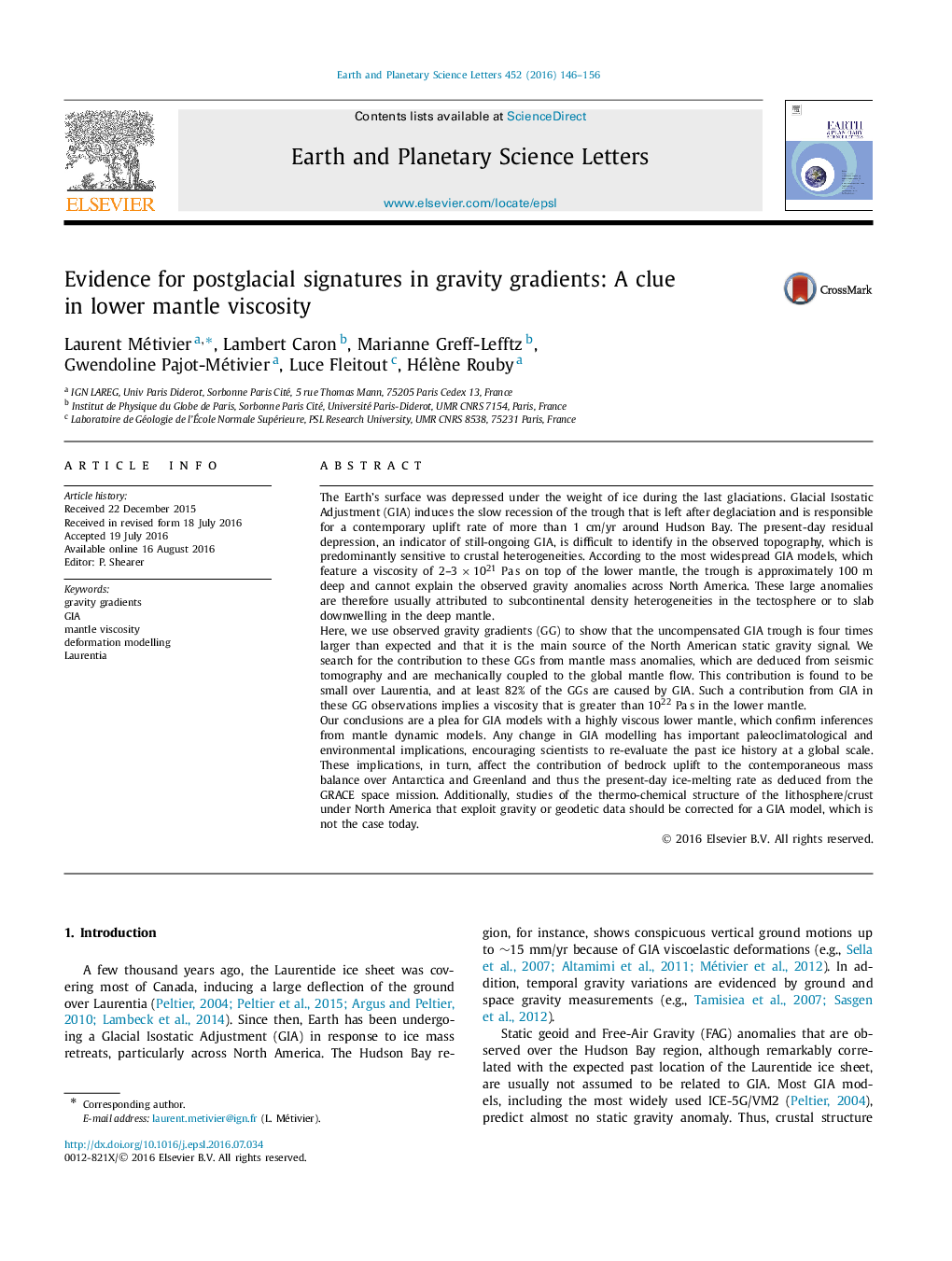| کد مقاله | کد نشریه | سال انتشار | مقاله انگلیسی | نسخه تمام متن |
|---|---|---|---|---|
| 6427108 | 1634704 | 2016 | 11 صفحه PDF | دانلود رایگان |
- Gravity gradients show long-wavelength anomalies across North America.
- Laurentian geoid, gravity and gravity gradient anomalies are mostly caused by GIA.
- These results imply a high viscosity in the lower mantle.
- Thermo-chemical studies of the North American lithosphere should be corrected for GIA.
- Such a change in GIA modelling may affect recent ice melting estimations.
The Earth's surface was depressed under the weight of ice during the last glaciations. Glacial Isostatic Adjustment (GIA) induces the slow recession of the trough that is left after deglaciation and is responsible for a contemporary uplift rate of more than 1 cm/yr around Hudson Bay. The present-day residual depression, an indicator of still-ongoing GIA, is difficult to identify in the observed topography, which is predominantly sensitive to crustal heterogeneities. According to the most widespread GIA models, which feature a viscosity of 2-3Ã1021Â Paâs on top of the lower mantle, the trough is approximately 100 m deep and cannot explain the observed gravity anomalies across North America. These large anomalies are therefore usually attributed to subcontinental density heterogeneities in the tectosphere or to slab downwelling in the deep mantle.Here, we use observed gravity gradients (GG) to show that the uncompensated GIA trough is four times larger than expected and that it is the main source of the North American static gravity signal. We search for the contribution to these GGs from mantle mass anomalies, which are deduced from seismic tomography and are mechanically coupled to the global mantle flow. This contribution is found to be small over Laurentia, and at least 82% of the GGs are caused by GIA. Such a contribution from GIA in these GG observations implies a viscosity that is greater than 1022Â Paâs in the lower mantle.Our conclusions are a plea for GIA models with a highly viscous lower mantle, which confirm inferences from mantle dynamic models. Any change in GIA modelling has important paleoclimatological and environmental implications, encouraging scientists to re-evaluate the past ice history at a global scale. These implications, in turn, affect the contribution of bedrock uplift to the contemporaneous mass balance over Antarctica and Greenland and thus the present-day ice-melting rate as deduced from the GRACE space mission. Additionally, studies of the thermo-chemical structure of the lithosphere/crust under North America that exploit gravity or geodetic data should be corrected for a GIA model, which is not the case today.
Journal: Earth and Planetary Science Letters - Volume 452, 15 October 2016, Pages 146-156
